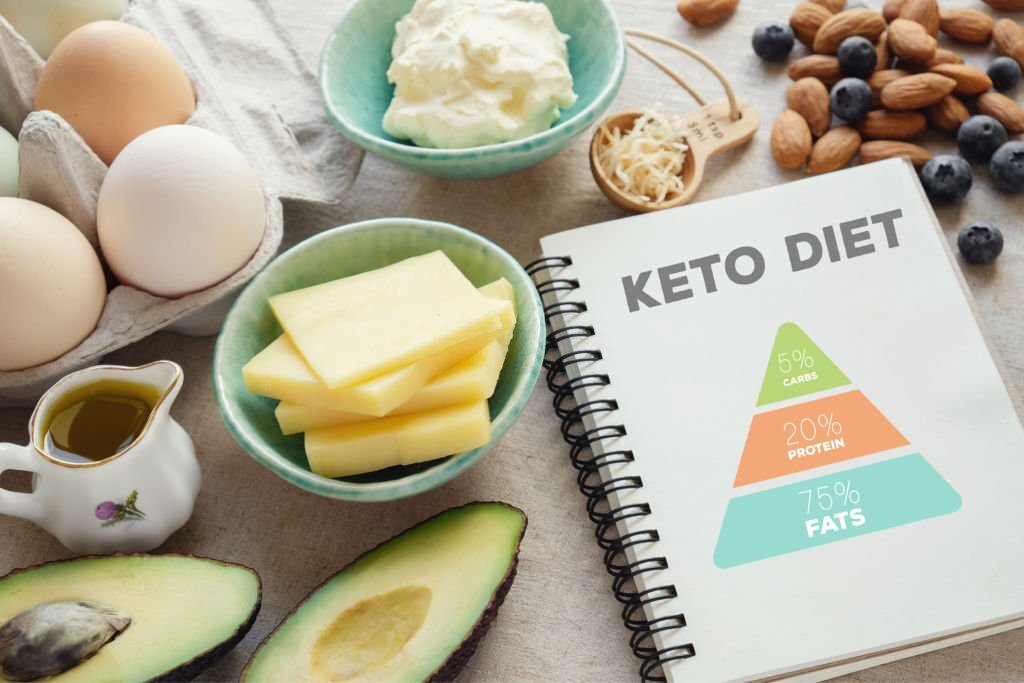
The keto diet is a revolutionary way of eating that has been proven to be incredibly effective for weight loss and improving your overall health. It involves following a diet of natural, healthy fats, which provides an alternative to the standard Western diet of processed foods.
This diet has been used for centuries by the indigenous people of Siberia and North America to improve health as well as treat many diseases.
It was first developed in the 1920s and 1930s by Dr Russell Wilder at St. Mary's Hospital in London. He noticed that fasting patients with epilepsy experienced fewer seizures when they ate only fatty foods such as butter instead of carbohydrates.
The ketogenic diet limits carbohydrate consumption to less than 50 grams per day (less than five percent of total calories). This means that most people who follow the keto diets consume around 80 to 90 grams of carbohydrates per day.
On average, these individuals eat about 200 to 300 grams of fat each day.
Not only does it help you lose weight, but it can also help improve your risk for diseases like diabetes, cancer, and Alzheimer's. In fact, many studies have shown that this type of diet is even successful against conditions like epilepsy and diabetes.
In this article, we will discuss how to start a keto diet plan in order to achieve better results. We will also provide some tips on what to eat and what not to eat while on a keto diet.
What Is A Ketogenic Diet?
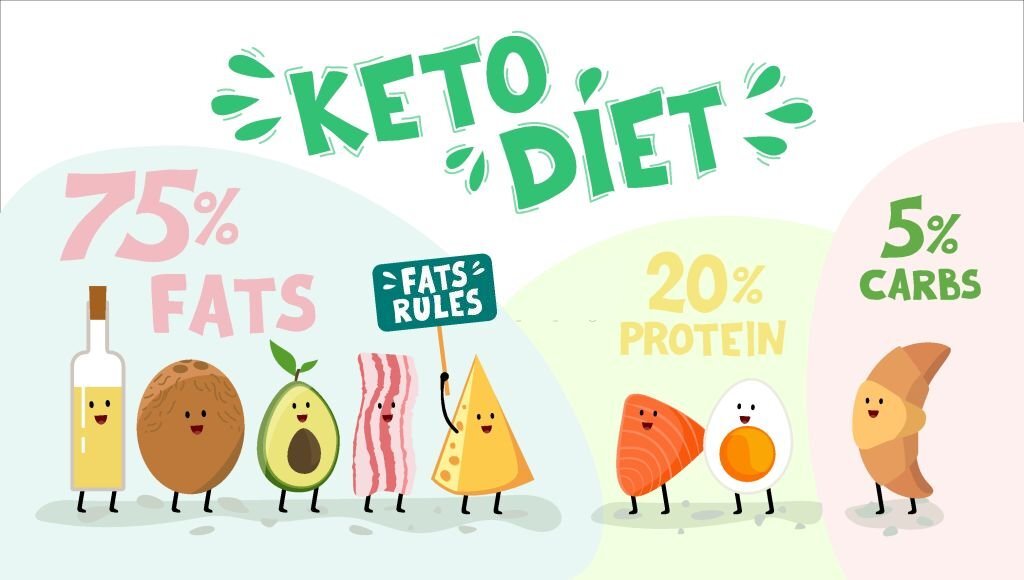
A ketogenic diet is a high-fat, low carbohydrate diet that forces your body into a metabolic state called ketosis. When you follow a ketogenic diet, your liver produces ketones instead of glucose (a sugar) from stored fat. Your brain uses these ketones as energy, so you feel full without consuming large amounts of food.
This diet also decreases inflammation and improves your brain function. You will not only lose weight by eating foods like meat, fish, eggs, cheese, butter, fruits, and vegetables, but you will also see other health benefits similar to those of calorie-restrictive diets.
In order to execute this diet, you need to restrict carbohydrates, which gives the body little glucose and no insulin. The body then relies on using fat for energy instead of carbohydrates.
In a study done at Massachusetts General Hospital, researchers observed that a low-carbohydrate diet resulted in more weight loss than a moderate-protein, low-fat diet over three months. The low-carb diet also resulted in a reduction in blood glucose, insulin levels, and medications for diabetes.
When you first begin a keto diet, you may experience headaches or dizziness. However, most people find that they get relief within two weeks. You should expect to see improvements in your energy levels and mental clarity after about four weeks.
The Keto diet is not a fad nor a quick fix. You must change your lifestyle entirely and be committed to this new way of eating. You will have to learn how to eat healthier foods on the keto diets, and you will learn that you can still enjoy the foods you love even while adhering to this way of eating.
How Does A Keto Diet Work?
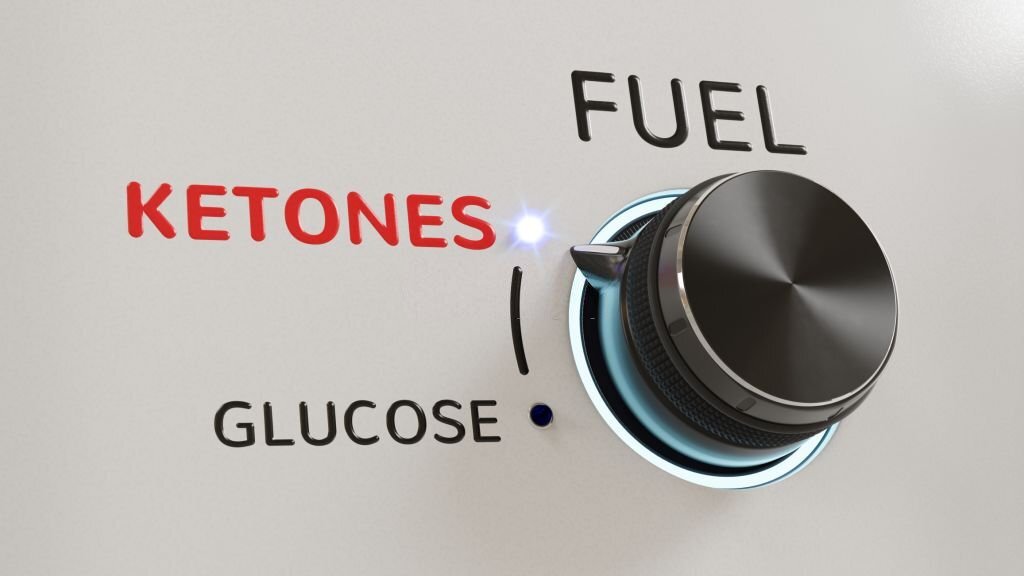
The ketogenic diet works because it causes your body to enter a metabolic state called ketosis. When you are in a state of ketosis, your body starts producing ketones, which are then converted into energy by your cells.
When you consume carbohydrates, your body converts them into glucose, then transported to your cells. Once inside your cell, the glucose is converted into glycogen, which stores the glucose until needed. Glycogen can store up to 200 times its own weight in water.
However, when you don't consume carbohydrates, your body enters a state of ketosis. In this state, your body stops converting carbs into glucose and begins burning body fat instead. Fat contains fewer calories per gram than carbohydrates, so if you burn fat rather than carbohydrates, you will naturally lose weight.
Different Types of Keto Diet
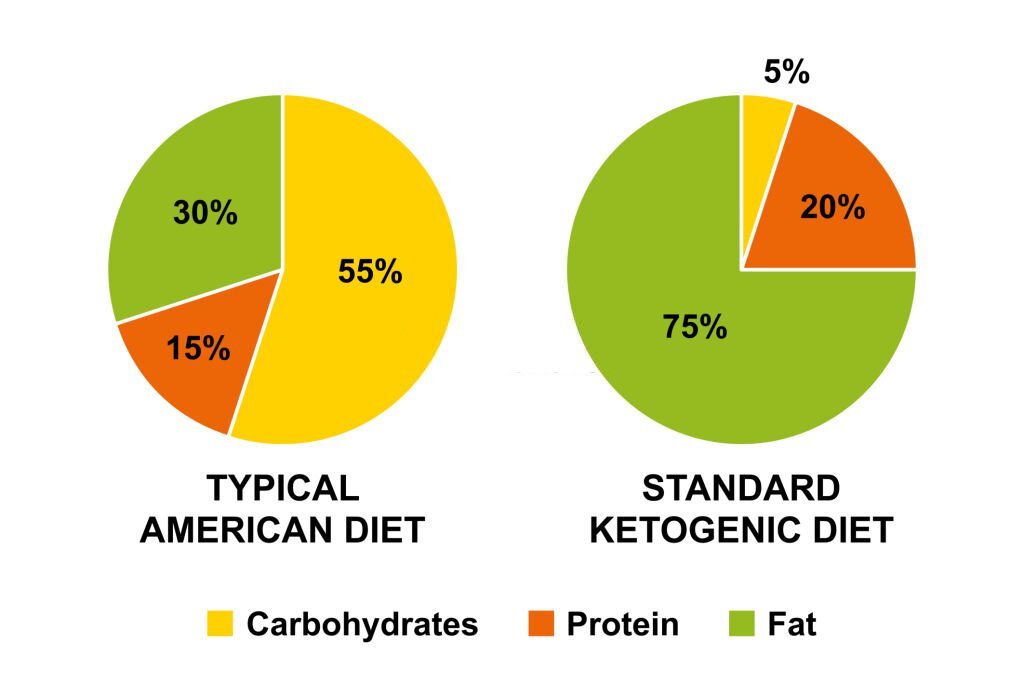
There are several different types of ketogenic diets. They include:
1. Standard Ketogenic Diet (SKD)
SKD is a high fat, adequate protein, low carb diet that has been used as an effective treatment for children with drug-resistant epilepsy since the 1920s. SKD was developed to treat complex cases of childhood epilepsy and is still considered by many to be the best dietary therapy available today.
However, SKD has recently seen increased popularity in treating patients with refractory adult epilepsies, including those with focal seizures, generalized tonic-clonic seizures, absence seizures, myoclonic seizures, juvenile myoclonic epilepsy, and others.
2. Cyclical Ketogenic Diet (CKD)
The Cyclical Ketogenic Diet is a diet that cycles between periods of ketosis and non-ketosis. It was developed by Drs. Stephen Phinney, PhD and Jeff Volek, PhD in the 1990s as an alternative to the classic ketogenic diet for people with epilepsy who are not responsive to this type of treatment.
The CKD has been shown to improve seizure control compared to the classic ketogenic diet. Still, some evidence suggests that it does not produce the same degree of weight loss as the classic ketogenic diet.
3. Targeted Ketogenic Diet (TKD)
Targeted Ketogenic Diet (TKD) is a diet that has been designed to help you lose weight, reduce the risk of diabetes and heart disease. It's also a great way to improve your mental health.
Dr Steven Phinney created the TKD in 2005 after he had seen many patients who were struggling with their weight and health conditions. He wanted to create a diet plan that would be easy to follow, yet one that could provide long-term results.
Dr Phinney found that the ketogenic diet worked well for his patients and decided to create a program that would allow him to share his findings with others. This led to the creation of the Targeted Ketogenic Diet.
4. Low Carbohydrate Ketogenic Diet (LCKD)
The ketogenic diet is a high-fat, adequate protein and low carb diet plan that has been used for over 100 years to treat intractable epilepsy in children.
The goal of the LCKD is to induce a metabolic state called “ketosis”, which is characterized by elevated levels of circulating ketone bodies (acetoacetic acid and β-hydroxybutyric acid).
In recent years, the ketogenic diet has gained increasing attention from both researchers and the public alike due to its potential benefits for the treatment of various neurological disorders such as Alzheimer's Disease, Parkinson's Disease, Autism Spectrum Disorder, Epilepsy, Multiple Sclerosis, Stroke, Brain Injury, Depression, Schizophrenia, Cancer, Type 2 Diabetes, Obesity, Cardiovascular Diseases, Metabolic Syndrome, Polycystic Ovary Syndrome, Nonalcoholic Fatty Liver Disease, and more.
5. High Protein Ketogenic Diet (HPKD)
The high protein ketogenic diet is a very low carbohydrate, moderate to high fat and moderate protein diet. It has been used for centuries in the treatment of epilepsy.
The diet was developed by Dr Russell Wilder at Johns Hopkins Hospital in Baltimore, Maryland, in 1921. He named it after his mentor, Dr John Banting, who discovered that insulin could be used to treat diabetes.
The HPKD is a very effective diet for those suffering from obesity, diabetes, cardiovascular diseases, cancer, and even brain injuries. However, it can be difficult to maintain on a daily basis because of the high amount of protein required.
6. Medium Chain Triglyceride Ketogenic Diet (MCTKD)
The Medium Chain Triglyceride (MCT) Ketogenic Diet is a modified version of the Atkins Diet. MCT oil contains medium chain fatty acids that are metabolized differently than long chain fatty acids. They have been shown to increase energy expenditure, decrease appetite, and promote satiety.
The MCTKD is a popular diet among celebrities like Kim Kardashian, Jennifer Aniston, and Gwyneth Paltrow.
Even though there are different types of the ketogenic diet, they all work by reducing carbohydrates while increasing fats. You need to reduce your carb intake to less than 20 grams daily to achieve this.
However, if you want to get into ketosis faster, then the Low Carbohydrate Ketogenic diet may be better suited for you.
What is Ketosis, And Why Is It Important?
Ketosis is a metabolic state where your body uses fat for energy instead of carbs. When you eat too many carbs, your blood sugar levels rise rapidly.
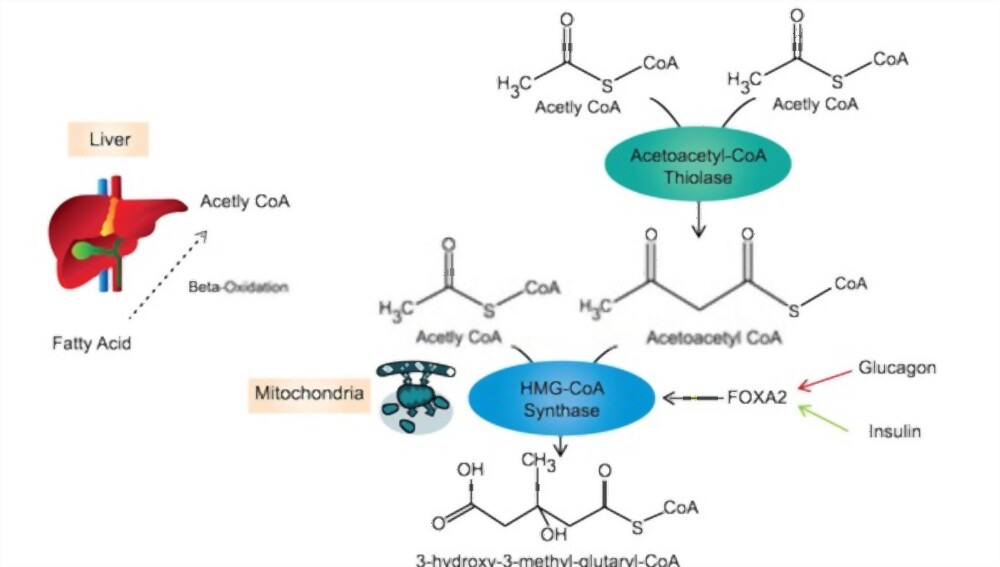
To function correctly, your brain needs quick access to glucose – the simple sugar found in foods like bread, pasta, rice and potatoes. But your pancreas produces insulin to help control how much sugar gets into your bloodstream.
Insulin helps move glucose out of your blood and stores it in your muscles and liver. If your body doesn't use up all the stored glucose, it converts some into fatty acids. Your body uses these for energy.
When you consume fewer carbs, your body starts producing fewer insulin levels, and your blood sugar stays low longer. As a result, your body burns fat rather than carbs for energy. You're now in a state called “ketosis.”
The ketosis state is crucial because it's when your body begins burning fat for fuel. This process is known as autophagy or self-eating.
Autophagy is an essential part of our metabolism. The process allows us to break down old cells and recycle them back into new ones.
It also plays a role in cell growth and development, tissue repair, and immune system functioning.
How to Get into Ketosis?
The process of getting into ketosis can be pretty easy or challenging, depending on your current health and lifestyle. If you are currently overweight, it will be much easier to get into ketosis than if you have been slim all your life.
The most important thing when trying to get into ketosis is to limit your net carbs to around 50g per day. This means cutting out starchy vegetables such as potatoes, sweet potatoes, corn, peas, beans, lentils, etc. Instead, focus on eating more leafy greens, broccoli, cauliflower, cabbage, Brussels sprouts, kale, spinach, etc.
You should also avoid fruit juices, alcohol, grains, dairy products, legumes, and other starches.
If you are unsure whether or not you are already in ketosis, try taking a urine test. Urine tests measure the level of acetone in your system. Acetone is produced during ketosis, so if you see an elevated reading, you are probably in ketosis.
You can also check your ketones using a ketone meter. An excellent way to do this is to drink a glass of water with one gram of sodium bicarbonate added to it. Wait 30 minutes before checking your ketone levels. If you see a reading above 0.5 mmol/L, you are in ketosis.
In addition to limiting carbs, you must also make sure you are consuming enough protein. Protein is essential for building muscle mass and repairing damaged cells. It's recommended that you aim for 1-1.2 gm of protein per kg of your weight. For example, if you weigh 100kg, you would need about 110-130g of protein daily.
To ensure you are getting enough protein, you can take a supplement or mix nuts and seeds into your meals. Nuts contain high amounts of healthy fats, while seeds are rich in fiber and protein.
To stay in ketosis, you must keep your carb intake below 20 grams daily. However, you can increase your protein intake gradually until you reach your target amount.
Once you start feeling better, you may want to add back some of your old favorite foods. Just remember to limit them to no more than 10% of your total calories.
Potential Benefits of the Keto Diet
A recent study published in the International Journal of Environmental Research & Public Health found that the keto diet may be helpful in treating obesity.
If you have struggled with weight loss for years, then the keto diet might just help you shed those extra pounds. Studies show that people who follow the keto diet tend to experience significant weight loss within the first few weeks.
According to the study, the keto diet can help obese individuals achieve greater weight loss than those following traditional calorie restriction diets. This is because the keto diet promotes fat oxidation, which helps burn off stored fats in the body. In addition, the diet reduces appetite, which makes losing weight easier.
In the study, researchers analyzed data collected from three different studies conducted over a period of 10 years. All the participants had been diagnosed with type 2 diabetes and were put on a standard calorie restriction diet. After six months, half of the patients were switched to the keto diet while the others continued on the same diet.
Researchers observed that both groups lost about 5% of their total body weight. However, the keto group experienced faster weight loss compared to the control group. They also saw significant improvements in blood pressure and cholesterol levels.
The authors concluded that the keto diet is a safe and effective approach for managing overweight and obesity.
Other Health Benefits of the Keto Diet
There are many other benefits of the ketogenic diet besides weight loss. Here are just a couple:
1. Improved Health
According to studies, the keto diet helps reduce blood pressure, LDL cholesterol levels, and triglyceride levels. Furthermore, it improves sleep quality and reduces the risk of diabetes.
2. Better Brain Function
The keto diet has been shown to improve cognitive function. This is because it increases the amount of energy available to the brain.
3. Increased Energy Levels
Many individuals report increased energy levels after starting the keto diet. This is because the body begins burning stored fat instead of carbs as its primary source of fuel.
4. Reduced Risk Of Heart Disease
Research shows that the keto diet may reduce the risk of cardiovascular disease by improving lipid profiles. Lipids are fatty substances that build up inside the arteries. When these lipids accumulate, they can cause plaque buildup. Plaque buildup can eventually block blood flow and increase the risk of heart attacks.
5. Improves Athletic Performance
Athletes who use the keto diet plan often notice improved performance during exercise. This is mainly attributed to the fact that the keto diet provides more energy than other diets.
6. Reduces Stress And Anxiety
People who suffer from stress and anxiety often find relief when they start eating healthier. This is because the keto diet eliminates processed foods and refined sugars. These foods are known to increase stress hormones.
7. Boosts Immunity
Eating healthy foods like vegetables and fruits is essential for boosting immunity. This is why many people choose to eat the keto diet. It contains plenty of fresh produce.
8. Helps With Sleep Disorders
Some people struggle with sleeping disorders such as insomnia and restless legs syndrome. The keto diet plan can help them get a better night's rest.
Is Keto Diet Safe?
The ketogenic diet can be very beneficial if you have certain medical conditions like epilepsy or type 1 diabetes. However, you should not use it without consulting a doctor first. There are some risks involved in following this weight loss program. Some of these include:
1. Low Potassium Levels
If you do not consume enough fruits and vegetables, you may develop low potassium levels. This can lead to muscle cramps, fatigue, and confusion.
2. High Sodium Levels
You must ensure that you consume adequate amounts of salt while on the keto diet. Too much salt can cause water retention and swelling.
3. Muscle Loss
When you start consuming fewer carbs, you lose muscle mass. This can lead to weakness and tiredness.
4. Bone Fractures
Since bones contain a lot of calcium, they become weaker when you don't get enough protein. A lack of sufficient protein may also lead to brain damage. Therefore, you must ensure that you eat plenty of protein-rich foods while following the keto diet.
5. Kidney Stones
The kidneys play a vital role in removing excess fluid from the body. Therefore, you may suffer from kidney stones if you don't drink enough fluids.
6. Heart Problems
Eating too many processed foods can raise the chances of having cardiovascular issues. Make sure that you avoid eating fast food and junk foods while following the keto plan.
7. Gastrointestinal Disorders
Consuming large quantities of meat can result in gastrointestinal disorders.
8. Insulin Resistance
Following the keto diet can lead to insulin resistance. This means that your cells will no longer respond appropriately to insulin. In order to avoid this condition, you must follow a balanced diet that includes both healthy fats and proteins.
What Do You Eat on The Keto Diet?
You can enjoy all kinds of foods on the keto diet, but there are specific guidelines that you need to follow. These include:
1. No Sugar
Sugar is one of the main ingredients found in most processed foods. It has been proven to contribute to weight gain and obesity. Therefore, you need to eliminate all forms of sugar from your diet.
2. No Grains
Grains are high in carbohydrates and should be avoided at all costs. They also contain gluten which can trigger inflammation in the digestive tract.
3. No Dairy Products
Dairy products are high in saturated fats and calories. Therefore, you needn't consume them while following the keto lifestyle.
4. No Alcohol
Alcoholic beverages are high in calories and carbohydrates. As a result, you shouldn't consume any alcoholic drinks while following the keto regime.
5. No Legumes
Legumes are high in fiber and nutrients. However, they are also high in carbohydrates and should therefore be eliminated from your diet.
How Long Does The Ketogenic Diet Last For?
There isn't an exact time for how long you should stay on the keto diet plan. However, experts recommend staying on it for around three months before making any changes.
After this period, you can decide whether or not you want to continue with the keto lifestyle.
Eight Common Mistakes
Many people who try the keto diet fail because they make common mistakes. Here are some of these mistakes:
1. Not tracking their progress
Tracking your progress is very important since it helps you identify areas where you can improve. You won't know what works best for you if you don't track your progress.
2. Failing to stick to the rules
Some people tend to deviate from the keto diet plan even though they have followed all the rules. This is because they find it challenging to adhere to strict dietary requirements.
3. Over-exercising
Exercising is essential for maintaining a healthy body. However, overdoing it can cause muscle loss and fatigue. Therefore, you need to exercise moderately while following the keto diet plan to achieve maximum benefits.
4. Skipping meals
Skipping meals can lead to low energy levels and poor concentration. Therefore, you need to use caution when skipping meals.
5. Going overboard with protein
Protein is essential for building muscles and repairing damaged tissues. However, consuming excessive amounts of protein can lead to kidney damage. Therefore, you must protect yourself by sticking to moderate doses of protein.
6. Consuming too much fat
Fat is essential for providing energy to your body. However, overeating it can lead to heart disease. Therefore, you must protect yourself by limiting your intake of unhealthy fats.
7. Eating too many carbs
Carbs are necessary for producing energy. However, consuming too many net carbs can lead to weight gain. Therefore, you need to try to limit your carb intake.
8. Consuming excess salt
Salt is essential for keeping our bodies hydrated. However, consuming too much of it can increase blood pressure. Therefore, you need to protect yourself by limiting the amount of salt you eat.
How to Start A Keto Diet Now
Before beginning a keto diet, be prepared both mentally and physically. Here are some tips that will guide you through the first few weeks.
1. Choose Your Food Wisely
First, you need to understand the basics of the keto diet. Plenty of resources available online will give you detailed information about the keto diet. You can do this by reading books or watching videos about the keto diet.
Once you have a good understanding of the keto diet, you can begin preparing your own food. To do this, you need to buy ingredients like butter, cheese, meat, eggs, etc.
You must choose foods that will help you lose weight and keep you full for longer periods of time. These foods include vegetables, fruits, nuts, seeds, eggs, fish, lean meat, poultry, dairy products, and unsweetened nut butter. Avoid processed food items such as bread, pasta, cereals, cakes, cookies, candies, and other sugary treats.
The next step is preparing your kitchen. You can either use a commercial kitchen or build one at home. You will need to buy the right equipment such as a blender, food processor, grinder, juicer, etc. Ensure you also purchase ingredients like coconut oil, butter, eggs, nuts, seeds, etc. Either way, you need to ensure that you have the right equipment.
Finally, you need to follow a specific meal plan. This includes planning your meals in advance and sticking to them.
2. Eat Small Meals Frequently
You should aim to consume small meals frequently throughout the day. The reason behind this is that frequent meals will prevent you from feeling hungry and overeating in one go. It also keeps your metabolism high.
For instance, if you usually eat three large meals per day, try eating two smaller ones instead. If you want to make things easier on yourself, you can prepare your keto meals ahead of time and store them in the fridge.
3. Drink Plenty Of Water
Drinking plenty of water is an integral part of the ketogenic diet. Dehydration causes headaches and dizziness, which may discourage you from adhering to the diet.
Also, drinking enough water prevents constipation, which is another problem associated with the keto diet.
4. Limit Alcohol Intake
Alcohol contains carbohydrates, which means that you cannot drink alcohol on a keto diet.
If you want to enjoy alcoholic beverages, then do not forget to count them in your daily calorie intake.
5. Stick To The Rules
Sticking to the rules is very important when starting a keto diet. Make sure you strictly follow the guidelines your doctor or nutritionist provides.
For example, you should avoid using laxatives because they contain unnecessary calories.
6. Get Enough Sleep
Sleep plays a crucial role in maintaining good health. When you sleep well, your brain produces chemicals that boost your mood and make you feel more alert.
On the contrary, lack of sleep makes you tired and sluggish. Aim for sleeping eight hours every night.
7. Exercise Regularly
Exercise helps burn extra calories and boosts your metabolic rate. This, in turn, increases your ability to lose weight faster.
Try exercising three times a week for 30 minutes each session.
8. Track What You Eat
Tracking what you eat is very important while following a keto diet plan. Write down everything that goes into your mouth, including snacks, drinks, and even medications.
Doing so will help you identify any hidden sources of sugar that could sabotage your efforts to get fit.
9. Keep Yourself Motivated
It is easy to fall off track when you are doing the keto diet. Therefore, you need to find ways to stay motivated. One way to achieve this is by setting goals for yourself.
For instance, you can set a goal to reach 200 grams of net carbs per day or to have lost 2 pounds within two weeks.
10. Be Patient With Yourself
The keto diet is a lifestyle change. Changing your eating habits might take some time before you see results. Give yourself some patience and be persistent.
The Bottom Line
In conclusion, keto diets are straightforward to follow and highly effective. They allow you to eat foods you love without having to worry about counting calories or worrying about whether or not you're going to gain weight.
As long as you keep your portions small and your exercise levels high, you won't have to worry about gaining weight or falling short of your daily calorie intake.
In fact, studies show that ketogenic diets help reduce inflammation, improve sleep quality, and increase energy levels. So if you want to kickstart your metabolism and burn fat fast, then keto is definitely the diet for you!

Jennifer West is a health and wellness expert who provides information backed by science to help people live a healthier lifestyle. Her master's degree in nutrition science gives her an edge when writing about health, diet, and nutrition.
